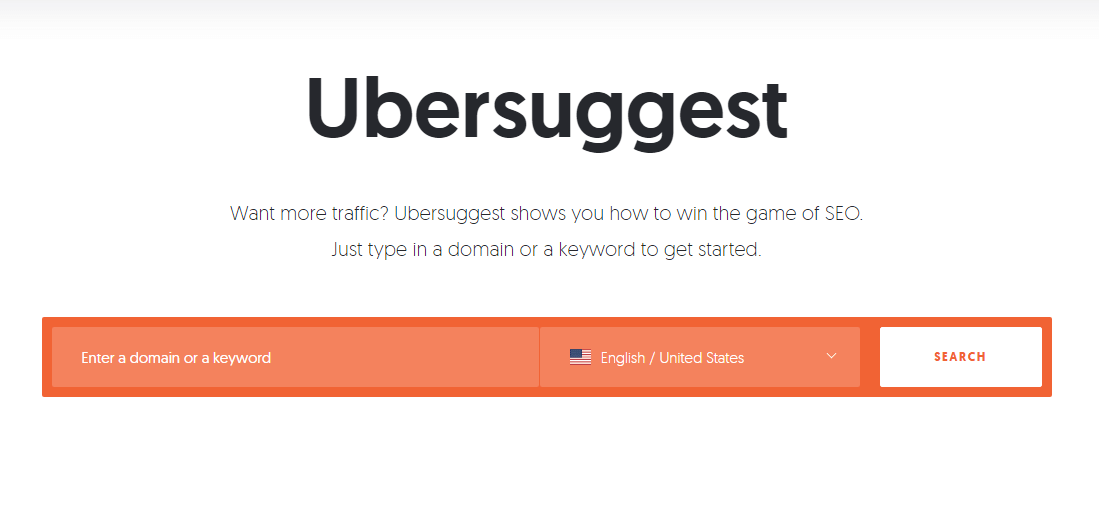No man is an island. This is an age-long saying humans have become one too familiar with.
In the world of web design, search engines and search engine optimization, dare I say “no website or web page is an island.” There is a constant need for interlinking and interconnection between websites.
In this piece, we’ll look at these interconnections, the concept, definitions, importance and so on.
Table of Contents
What is a backlink?
A backlink is a link to a particular web page from another web page on a different domain. So when one web page links to another web page (both on different domains), the link is seen as a backlink for the target web page.
A closely related term would be an external link. We can see an external link like the opposite of a backlink. So if another person links to you, we have already agreed that for the target web page, it’s a backlink.
Concerning the source of the link, on the other hand, such a link can be regarded as an external link.
Backlinking can, therefore, be seen as simply the act of creating a backlink.

Image source: Backlinko
Dofollow vs. Nofollow
From the naming convention, one can attempt to explain what a dofollow link and a nofollow link stands for. If you take that approach, it would not be out of place in the least.
So just like the name suggests, a dofollow link says, “Hey, you can follow me, I don’t mind.” A nofollow link, on the other hand, is the conserved and reserved guy. So it says, “no, I do not think that would be a good idea, I have a problem with that. I think I'll just be on my own, thanks”.
A dofollow link is a link that allows search engines, such as Google, as well as search bots, to follow them and reach the websites or web pages that the links point to. Allowing search engines and bots to follow a link give the website link juice and leads to better page rank in search results.
All links are dofollow links by default.
The nicest way to create a dofollow link is by the use of anchor tags. In this practice, targeted keywords are used in the anchor text and this gives the user a great idea of what the link is all about and what it contains.
This is an example of a dofollow link. This is assuming that they lead to a website, say https://moz.com/learn/seo/backlinks
The snippet for the dofollow link will be:
<a href="https://moz.com/learn/seo/backlinks">a dofollow link to moz</a>
Preview: a dofollow link to moz
A nofollow link is a link which has been manually modified to prevent search engines and bots from following it back to a source website.
A nofollow link basically tells the search engines, “Hey, just ignore me, I don’t count and I don’t want to have any impact or influence on my website whatsoever.”
Nofollow links are created by adding an attribute that explicitly states that the link is a nofollow. Considering the dofollow example given above, a nofollow will appear thus:
<a rel=”nofollow” href="https://www.amazon.com/">a nofollow link to amazon</a>
Preview: a nofollow link to amazon
Importance of backlinks for search engine optimization
Ever visited the comment sections of posts on Facebook, or seen a post on Quora, or even the answers to questions on StackOverflow (for programmers)?
On these platforms, algorithms are used to rank the posts or comments or answers in order of relevance. The posts or comments are displayed from the most relevant to the least.
One might be curious as to how these platforms decide what is relevant and what is not. Quora uses Upvotes.
When a reader feels a post or comment or response is great, they can click the upvote button. The post with the most upvote will appear first when that page is visited and the rest in descending order. This is the same for Facebook and StackOverflow, just with different names.
Having said all these, backlinks can be likened to upvotes on Quora. A web page with a lot of backlinks will give the search engines an impression that whatever content is on this page is great.
When the content of that web page is relevant to the keywords used in a search, the page with the most number of backlinks will surely appear among the top results. This is because multiple links to that site give assurance of great content to the search engine. This is a no-brainer.
Backlinks increase the traffic level to a website or web page especially by increasing the level of trust that is placed on the page by the search engines. Backlinks simply make a web page popular and appealing.
Types of backlinks and how to get them

1. Comment Backlinks
Usually, when posting comments on posts in a blog, provisions are made for including links back to a website. This can lead to reasonable traffic drive to your site and hence increased visibility if the comments are genuine and the posts are top level in terms of quality.
Spammers sometimes abuse this provision though.
You can get comment backlinks by looking for high-quality blog or forums related to what your site is all about and creating quality comments on them.
2. Newsworthy press release backlinks
When a brand has something newsworthy, it can be leveraged on two fronts. Creating a press release first and foremost will serve as a marketing strategy for the brand. In addition to that, the post about the news will help the brand's website get backlinks.
Also, if the media houses end up writing other posts related to your press release, more backlinks are likely to be made for the brand.
For this type of backlink to be effective, it has to be done only when there are interesting things to share with the brand.
Newsworthy backlinks can be gotten by writing press releases and distributing to media outlets for publishing.
3. Guest blogging backlinks
Guest blogging is the practice of writing an article and posting it on someone else’s blog or website. Guest blogging can help in building brand awareness.
Guest blogging backlinks can be gotten by creating editorial backlinks to your own site when making guest posts.
You can build a list of guest blogging sites that have your target audience and figure out the ones that allow guest blogging backlinks in the main content. Write articles for them and include links back to your site.

Image source: worthyfigures
4. Guest post bio backlinks
In some cases, guest blogging sites may not allow a guest poster to add links back to their site within the main content of the guest article. They would rather allow the author to put a link back to the author site in the author bio section. This may not be as effective as putting the links in the body of the article but it is still good.
You can build a list of guest blogging sites that have your target audience and figure out the ones that allow guest post bio backlinks. Afterward, you can proceed to write for them.
5. Business profile backlink
You can create an online profile for your site or brand on online business directories, listings, and social media.
Most of these platforms give the opportunity to create a backlink to your site and this can be leveraged.

Image source: thankyourskin
6. Badge backlink
Creating badges to honor or award brands is a clever way of getting backlinks. Once these brands post the badges on their sites, you automatically get a link back to your site.
You will need to ensure that the brands you target for your badges are related to or relevant to your own site.

Image source: linkresearchtools
7. Testimonial backlinks
When a user has great reviews or testimonies about a product or service from a company, there is a great chance the company would want to show off such for marketing purposes, and it will likely be on their home page.
Testimonial backlinks can be gotten by contacting companies who accept testimonials from their customers and this will most definitely go with a link to their social page or website.
8. “Best of” or “Top X” backlinks
There are popular niche sites or blogs who write articles suggesting top performers in different categories, and such posts naturally rank high in search results, especially from popular sites.
You can get these type of backlinks by if your brand is featured in those best of or top x articles, as they are most likely to put a link to the brand in focus. If your brand is not featured, you can reach out to the authors to offer new suggestions that might be of interest to them.
9. Backlinks from influencers
Influencers are now a thing. Influencers have become really popular especially on social media platforms such as Twitter. Influencers have massive followership on their platforms and a link from them is very likely to reach a great audience.
Backlinks from influencers can be gotten by getting in direct contact with and possible befriending them. Offer free services to influencers and introduce them to your brand, have them talk about it with links to your site. Some influencers keep everything completely professional and may charge a fee to create posts about brands.

Image source: neil patel
10. Free-tool backlink
When you create a tool that is of great value to your niche or community, you can have it promoted on sites that have an audience that is similar to yours. Another approach could be to create a lite or smaller version of a popular tool that is paid for and making it available for free.
11. Acknowledgment backlink
This is the type of backlink where a site mentions and links to another site, referencing a relationship, deal or even sponsorship. The links here do not necessarily have to include related content or audience. There just have to be an indication of a partnership such as sponsorship by the target link brand.
12. Editorial backlinks
This is one of the best types of backlinks in SEO. Editorial backlinks are links where your website is mentioned and linked to in a piece of content of high quality. This could be to refer to your web page as a source of additional information for further reading (because your content is great and relevant).
To get editorial backlinks, create and publish articles of great quality and content. Let them be shareable and this will get other sites wanting to talk about you, cite you or even interview you.
13. Forum links
Being active in forums, though old-school, is still another great avenue of creating multiple streams of backlinks. There are thousands of forums online and that translates to potential high volume traffic if leveraged well.
To get forum backlinks, find forums relevant to what your brand is all about and create posts that are worth the read. Have users interact with your posts and never fail to include links back to you whenever and wherever it fits in.
14. Infographics and imagery
There are people who are very visual in nature and would prefer graphics content to write-ups and articles. People like this are a great market for infographics if it is aimed at creative traffic for the source of the graphics.
Infographics and imagery backlinks can be gotten by creating appealing graphical content and ensuring that anyone using these materials give credit to your site and provides a link back to it.
The Creative Commons License is one sure way of ensuring that everyone using your imagery gives you the necessary credit. You can use Google image search to keep track of people using your products.
15. Definitional backlinks
These are links that point users or reader to external sources for getting a clearer understanding of concepts used in posts or articles.
You can get definitional backlinks if your site contains in-depth definitions about certain terminologies. When other sites want to refer their readers to sources of deeper explanation of certain terms, links will be put to your site if you have such resources.
Conclusion
Backlinks are important in SEO and very much relevant and should not be overlooked. One must ensure that backlinking is done properly and avoid creating or accumulating backlinks of low quality.
Creating backlinks in irrelevant posts or articles with poor quality content may be viewed as spam. This might end up undermining one’s search engine optimization efforts in the end.


Leave a Reply